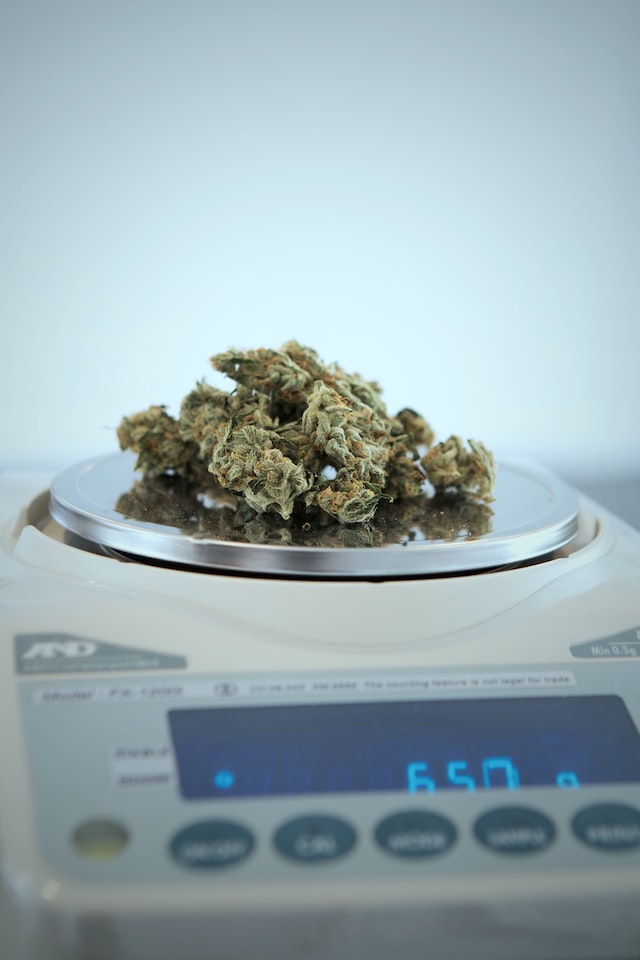Humans have used marijuana as an herbal medicine for thousands of years. The plant originated in Central Asia around 500 BCE and was soon after introduced to Africa, Europe, and eventually, the Americas where it was used for a variety of medical purposes to alleviate pain and nausea, increase appetite, combat fatigue, and many more.
By the late 1800s, pharmacies and doctors in the United States were prescribing cannabis to patients to treat many different types of ailments up until the U.S. government criminalized marijuana in the mid-20th century. Despite this somewhat turbulent period in the history of human cannabis use, medical marijuana has made a huge comeback in the U.S. today with 37 states and the District of Columbia having legalized the use of medical marijuana for chronic pain and other conditions due to its proven medical benefits.
In this guide, we will go over how cannabis can be used to alleviate chronic pain. We will also cover the best marijuana strains for pain and fatigue and alternatives to herbal cannabis that still offer a wide array of benefits for many medical conditions.
How Does Cannabis Minimize Pain?
Over the years, scientific research has proven that medical marijuana is not only a safe and effective treatment option for many different types of chronic pain, but it also offers some form of symptomatic relief for patients with cancer, multiple sclerosis, anorexia, irritable bowel syndrome, epilepsy, and more.
But how does this medicinal plant work to minimize pain and other negative symptoms? To understand how it impacts the body and the mind, we have to consider its chemical makeup.
Cannabis plants are partially made up of cannabinoids—naturally occurring chemical compounds—which are able to interact with specific cannabinoid receptors present in the human body. The most well-researched cannabinoids include tetrahydrocannabinol (THC), the main psychoactive ingredient in cannabis, and Cannabidiol (CBD).
Put simply, when people ingest or inhale medical marijuana, the THC stimulates the brain’s cannabinoid receptors, which activates the brain’s reward system, produces an elevated state of mind, and reduces feelings of chronic pain. Although CBD does not produce the same psychoactive effects, it also interacts with pain receptors in the brain to relieve both pain and inflammation.
Sativa vs. Indica
When shopping for medical marijuana for chronic pain or other ailments, it is important to consider that cannabis is typically solid in three major varieties: sativa, indica, or a hybrid of the two. These different varieties contain unique genes and chemical compositions that alter how people feel when they use marijuana products. Consequently, the best strains for pain, fatigue, etc. are not always the same.

Indica strains come from the Cannabis indica plant, which is a shorter and bushier plant than its sativa counterpart—Cannabis sativa. Indica strains usually contain a relatively equal ratio of CBD to THC and are generally associated with more of a body high that leads to:
- Relaxation
- Pain relief
- Soothing of nausea
- Drowsiness
On the other hand, sativa strains are said to produce more of a head high. These plants are long and lanky, and they usually contain more THC than CBD. Sativa strains generally lead to:
- A sense of euphoria
- Increased energy levels
- Reduced stress
- Improved focus & creativity
An online survey conducted in 2015 evaluated whether medical marijuana patients prefer indica or sativa strains for chronic pain and other symptoms. The results reveal that the participants preferred indica strains for pain management and to help with sleep, while they preferred sativa strains to combat fatigue.
Best Marijuana Strains for Pain & Fatigue
Even though we are able to determine some information about a given medical marijuana strain based on whether it is indica, sativa, or hybrid, we cannot always rely on those classifications.
Sometimes a sativa strain can offer the same benefits for chronic pain relief as an indica strain, and sometimes an indica strain will offer the benefits that are assumed to only come from a sativa strain.
The effects will depend on two main factors:
- The unique qualities of a given strain of the plant including the quantity of THC, CBD, and other naturally occurring compounds.
- The unique factors that make up a person using marijuana include their body chemistry, genes, diet, lifestyle choices, and how they choose to consume/use cannabis
Because the effects of certain strains are not always consistent, the medical marijuana strain that works best for your chronic pain, fatigue, nausea, or appetite might not have the same impact for someone else. Find the cannabis variety that works best for your unique body.
Alternatives to Herbal Cannabis
These days, there are so many ways you can reap the benefits of medical marijuana for chronic pain and other symptoms. If you are hoping to stay away from smoking herbal cannabis, you can try:
Oils
Using an alcohol-based solvent, it is possible to extract potent cannabis oils from marijuana plants. Patients only need to consume a very small amount to feel the effects. CBD oil in particular is very popular for chronic pain.
Topical Treatments
Patients can now turn to lotions, balms, and other topical treatments containing cannabinoids to reduce pain and inflammation.
Edibles
Edibles are arguably the most popular method for cannabis consumption. Cannabis can be seamlessly infused into baked goods and other foods that taste delicious. Just remember to take it slow with edibles because the effects can be difficult to predict unless you are sure of the exact quantity of THC you are consuming.
Sublingual Cannabis
With this method, the drug is placed directly under the tongue in order to enter the bloodstream more quickly.
Transdermal Patches
Cannabis patches can be placed on the skin to release a sustained amount of cannabinoids over a given period of time. Similar to sublingual cannabis, patches help move the cannabinoids into the bloodstream more quickly. This form of medical marijuana can provide long-lasting relief for chronic pain.
The Bottom Line
When you’re looking into the best medical marijuana options to help you treat chronic pain, fatigue, or any other condition, keep in mind that every strain is different just like every person. Find the stain that works the best for your body and mind.
If you are living in Arizona and are hoping to obtain a medical marijuana card to better your quality of life, AZ Marijuana Cards can help you get access through a simple, streamlined process. All you have to do is start your application and speak to a doctor.
Don’t hesitate to contact us today at info@azmarijuanacards.com or (602)-666-2710 if you have any questions about the process of obtaining a medical marijuana card in the state of Arizona. Order your card today!


